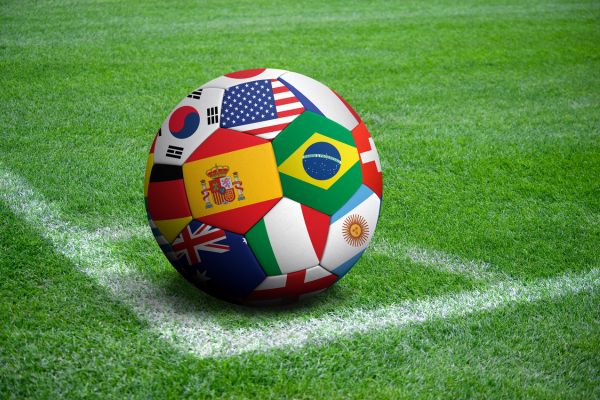The world of combat sports is vast, but few terms are as frequently confused as “MMA” and “UFC.” While they often appear interchangeable in casual conversation, there are significant distinctions between them that every fan, practitioner, or curious observer should understand. In exploring the MMA vs UFC differences, we’ll uncover the fundamental aspects that separate a sport from a brand and how these differences shape rules, gear, competition, and culture within the fighting world.
Understanding the Foundation: What is MMA?
Mixed Martial Arts, commonly referred to as MMA, is a full-contact combat sport that blends techniques from various martial arts disciplines. Fighters can employ a wide range of striking and grappling techniques, drawing from boxing, wrestling, jiu-jitsu, kickboxing, and Muay Thai, among others. The core philosophy of MMA revolves around creating the most complete and effective fighting system, enabling competitors to adapt and succeed in different combat scenarios.
MMA is not governed by a single organization. Rather, it exists as a sport in the same way that football or tennis does—participated in worldwide and overseen by different bodies depending on the region or league. Fighters can compete in numerous promotions, each with its own interpretation of MMA rules, although many follow the Unified Rules of Mixed Martial Arts, established to standardize competition for safety and fairness.
UFC Explained: More Than Just a Promotion
The Ultimate Fighting Championship, or UFC, is a promotional company that organizes and markets MMA events. It is the most prominent and globally recognized brand in MMA, and its influence has played a crucial role in bringing the sport into mainstream popularity. However, understanding the MMA vs UFC differences requires recognizing that the UFC is not the sport itself—it is merely a vehicle through which MMA is showcased.
Founded in 1993, the UFC has evolved from a niche, bare-knuckle competition into a multi-billion-dollar enterprise featuring top-tier athletes, state-of-the-art production, and a devoted fan base. Although the UFC has contributed significantly to shaping the rules and presentation of MMA, it is ultimately just one of many organizations within the sport.
Rules and Regulation Variances Between MMA and UFC
Another crucial aspect in discussing MMA vs UFC differences lies in the regulatory framework. While MMA as a sport follows a general set of principles—such as combining various fighting styles and ensuring competitor safety—individual promotions, including the UFC, may interpret or enforce these rules differently.
The UFC adheres closely to the Unified Rules of MMA, which include weight classes, round structures, fouls, and judging criteria. However, other organizations, particularly those based in different countries, may implement alternative rules. For example, organizations like ONE Championship in Asia permit knees to the head of a grounded opponent, a rule banned in the UFC. Such differences underscore how the promotion dictates the precise application of MMA rules within its events.
Fighter Gear and Presentation
When exploring the MMA vs UFC differences, gear and fighter presentation also come into play. MMA, as a general sport, allows athletes to wear a variety of gear depending on the promotion’s regulations. Fighters might choose different styles of shorts, gloves, or even walkout apparel that reflects their personal identity or sponsors.
In contrast, UFC fighters must adhere to strict uniform guidelines. The UFC has exclusive apparel deals—formerly with Reebok, now with Venum—meaning fighters are restricted in what they can wear during official events. This impacts their appearance and, in some cases, their potential sponsorship earnings. The UFC’s emphasis on branding and uniformity is a business decision that does not apply to MMA as a whole, illustrating yet another point of divergence between the sport and the company.
Competitive Pathways and Opportunities
The road to becoming a professional fighter in MMA can vary widely depending on the organization. Aspiring athletes can compete in regional promotions, amateur leagues, or international tournaments to build their record and reputation. These pathways exist independently of any single company and reflect the diverse nature of MMA as a sport.
The UFC, however, represents a pinnacle destination for many fighters. Getting signed by the UFC is often seen as reaching the highest level of competition due to its visibility and elite roster. Yet, it’s important to remember that numerous talented fighters compete in other major organizations such as Bellator, PFL, or RIZIN. These promotions offer different structures, contract terms, and fighter development programs, further highlighting that UFC is not the totality of MMA but merely one platform within it.
Media, Marketing, and Fan Perception
Perhaps one of the most influential MMA vs UFC differences is the way in which they are perceived by the public. Thanks to strategic marketing, cinematic event production, and larger-than-life personalities, the UFC has successfully positioned itself as synonymous with MMA in the eyes of many fans. This conflation is similar to how some people refer to all tissues as “Kleenex” or all soft drinks as “Coke”—a testament to the power of branding.
MMA, however, is much broader and exists independently of any single promotion. There are countless athletes, gyms, coaches, and events that contribute to the sport’s ecosystem without ever involving the UFC. While the UFC enjoys mainstream visibility, the diversity and richness of the MMA world extend far beyond its octagon.
Cultural and Global Reach
The UFC’s reach is undeniably global, but MMA as a sport thrives in countries where other organizations take the lead. In Japan, for instance, RIZIN continues the legacy of PRIDE FC, while in Russia and the Caucasus, ACA and other promotions dominate. In Brazil, local circuits serve as the breeding ground for future stars. These regions reflect different values, traditions, and audiences that contribute to the global identity of MMA.
While the UFC adapts to international markets, it often maintains a Western-centric brand identity. Conversely, the broader MMA landscape allows for more cultural variation in how events are run, how fighters are promoted, and how audiences engage with the sport.
Final Thoughts on MMA vs UFC Differences
At a glance, it’s easy to blur the lines between MMA and UFC, especially with the UFC’s dominant media presence. But understanding the MMA vs UFC differences is essential for anyone who wants a deeper appreciation of the sport. MMA is a dynamic, multifaceted discipline practiced and enjoyed around the world, while the UFC is a powerful promoter that operates within that space.
The rules, gear, opportunities, and culture can vary widely depending on whether one is referring to the sport of MMA or the UFC brand. Recognizing this distinction not only enriches your understanding as a fan but also honors the countless individuals and organizations that contribute to the sport’s evolution beyond the UFC spotlight.
Whether you’re training in a local gym, watching a rising star in a regional promotion, or cheering for a title fight under the UFC banner, it’s important to remember that MMA is the foundation—and the UFC is just one of its many expressions.



